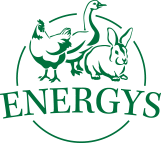Rabbits
Poultry
Laying hens
Quails
Guinea pigs
Pigs
Ostriches
Sheep and goats
Pigeons
Pheasants
Forest animals
Keeping Pigs
Man has kept pigs for many centuries. According to some sources, pigs began to be reared, mainly for meat, in the ninth century before Christ, when they were domesticated. Pigs were initially allowed to range free but were gradually placed in sties. How are pigs kept nowadays?
Rearing piglets
Breeders producing weaner piglets keep a sow in a sty on a straw bed, during which time some breed her naturally to a boar, while others use the standard method for controlled reproduction, which is insemination.
The goal is to produce piglets with a good birth weight, which can be influenced by the choice of genetics and nutritional measures while the sow is pregnant. It is essential that the sow is in the best possible condition before giving birth and has the optimum amount of fat.
The birth, which occurs on average after 115 days, is a critical period for the sow and piglets from many aspects. This particularly applies to modern genotypes of a sow, who take longer to give birth because they have more piglets in a litter. If the last piglets to be born suffer a lack of oxygen this results in slight brain dysfunction, which causes weaker reflexes and often means they don’t get to the sow in time to drink the colostrum.
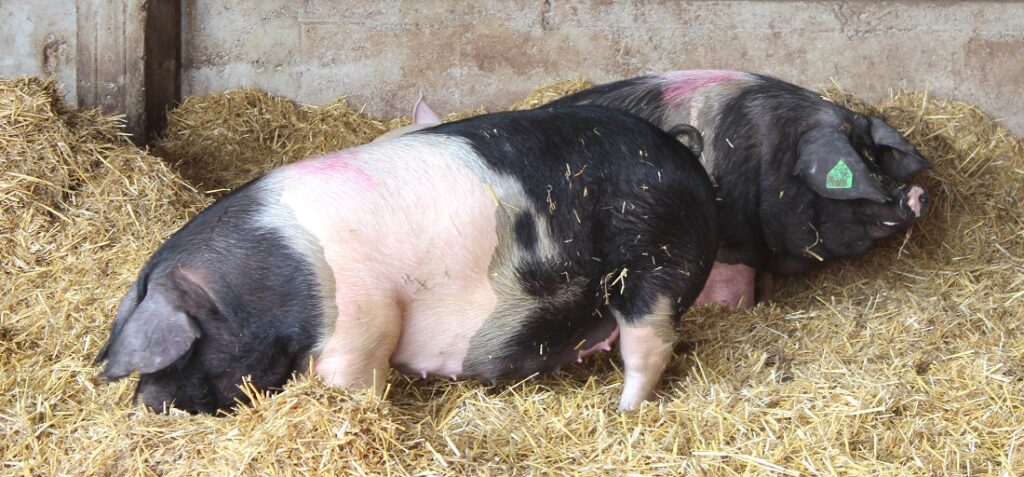
Sow productivity
While sow productivity equivalent to forty piglets a year (16.8 piglets per litter) is achieved in first-class European pig farms, breeding sows of the aforementioned Přeštice breed is a little different.
According to the current methodology created by the Association of Pig Breeders, individuals with average traits are used for breeding, during which time the focus is on the type, constitution, appearance, resistance to stress and longevity. Good reproductive traits are typical for the Přeštice Black Spotted breed and are expressed as 10.5 surviving piglets in the litter (at 21 days of age).
Rearing piglets
Assistance during birth, or placing an infrared lamp into the birthing pen in addition to the primary source of heat clearly helps avoid loss of new-born piglets. As well as a warm and dry pen the new-born piglet also needs to drink colostrum as soon as possible. The piglets’umbilical stumps are treated, their teeth are trimmed and they are given iron within three to five days. Male piglets are castrated with two weeks using the standard method.
Weaning the piglets
The piglets remain with the sow for about thirty days, whereas they have a complete feed mixture available from two weeks of age. They naturally have access to water from the first day after they are born. The weaned piglets, weighing between seven and eight kilograms, are moved to shared pens where they are provided with an ad libitum amount of feed mixture and water. At sixty days of age, they should reach a weight of around 25 kg and are ready for sale as weaners. The pigs are normally fattened for six months until they reach a weight of around 120 to 130 kg.
With regard to Přeštice pigs, a higher rate of growth is not good with regard to the quality and maturity of the meat. If Přeštice pigs are fed incorrectly they will start gaining fat at a weight of between seventy to eighty kilograms but will have very little lean meat. The ideal fattening period is about eight months, when the meat of pigs suitable for slaughter is mature, which is apparent in the cutlet by the marbled pattern created by intramuscular fat.
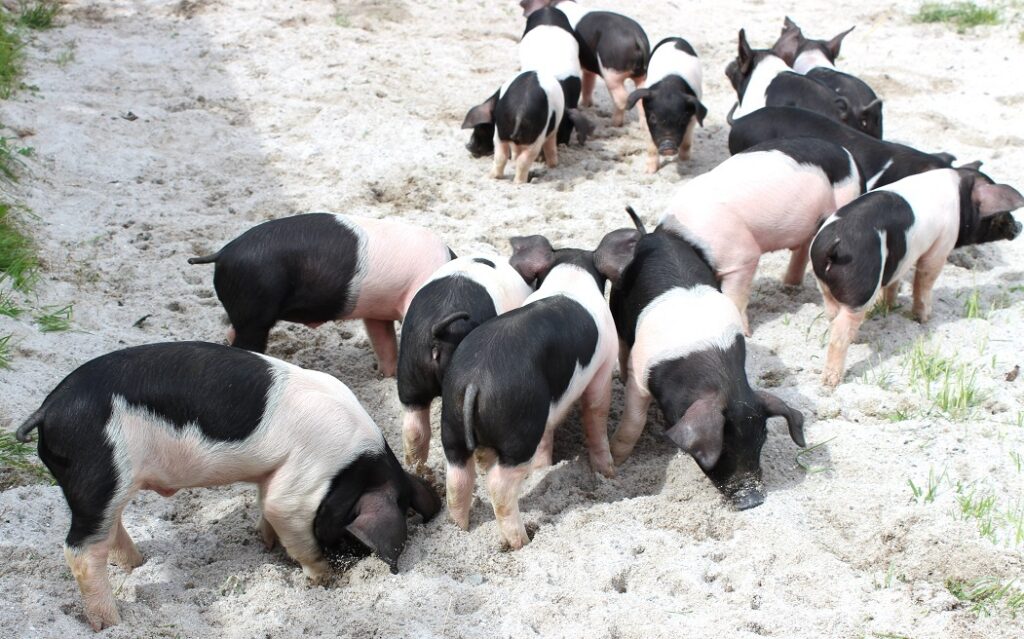
Housing pigs
From the youngest ages, pigs are kept on a straw bed. Daily addition of straw ensures that the animals are clean and also provides them with entertainment and there is no need to worry about chewed tails or ears. Because pigs also eat the straw, they are provided with high-quality rye straw, which they enjoy the taste of.
There is no need to debate the fact that pigs are social animals adapted to living in small groups. Keeping pigs in stable groups of five to seven sows with their piglets and one boar is based on this natural behavior.
Sows with piglets are transferred to the pen shared by a family of pigs six weeks after farrowing. The boar stimulates the sows and they go into heat even when they are still suckling the piglets. The piglets are weaned at three months of age when they are eating solid food. The advantage of this significantly longer social contact with their mother is that the pigs are kept practically free of stress.
Related posts
24. August 2021
In December 2020, fifty-three pig farms in the country were under the organic farming regime. Most of them are breeding black-footed pigs, which have been classified as genetic resources since 1992. The Hungarian curly-coated pig is a similarly hardy and undemanding breed, which is also growing in popularity with our breeders.
25. May 2021
In the Czech Republic, breeders work with sire breeds (currently represented, in particular, by White Sire, Duroc and Piétrain), including their synthetic lines (SL 34, SL 38, SL 48 and possibly SL 68) and pig dam breeds.
18. May 2021
Commercial pig breeders use both breeds that excel thanks to their reproduction parameters and breeds that pass on to their offspring good growth abilities, resilience and good meat quality. As a part of the hybridisation programme, the Pig Breeders Association and breeders work with dam breeds (Czech Improved White and Czech Landrace) and sire breeds.
19. June 2020
In order to assure that the pigs are in a good state of health, it is essential to feed them grain feed as a basis. Selection of these feeds is limited not only by the farmer’s potential, but also the chosen farming method. For example, the rules of ecological farming place emphasis on providing organically…
11. May 2020
Pigs were gradually moved from outdoors into enclosed styes, which developed into sophisticated stye capacities utilising technologies not only for automated feeding and water supply systems, but also for controlling the stye environment, in commercial farms. Ecological farming trends have been popular for some time in Europe in relation to demand for healthy products from…
Related products
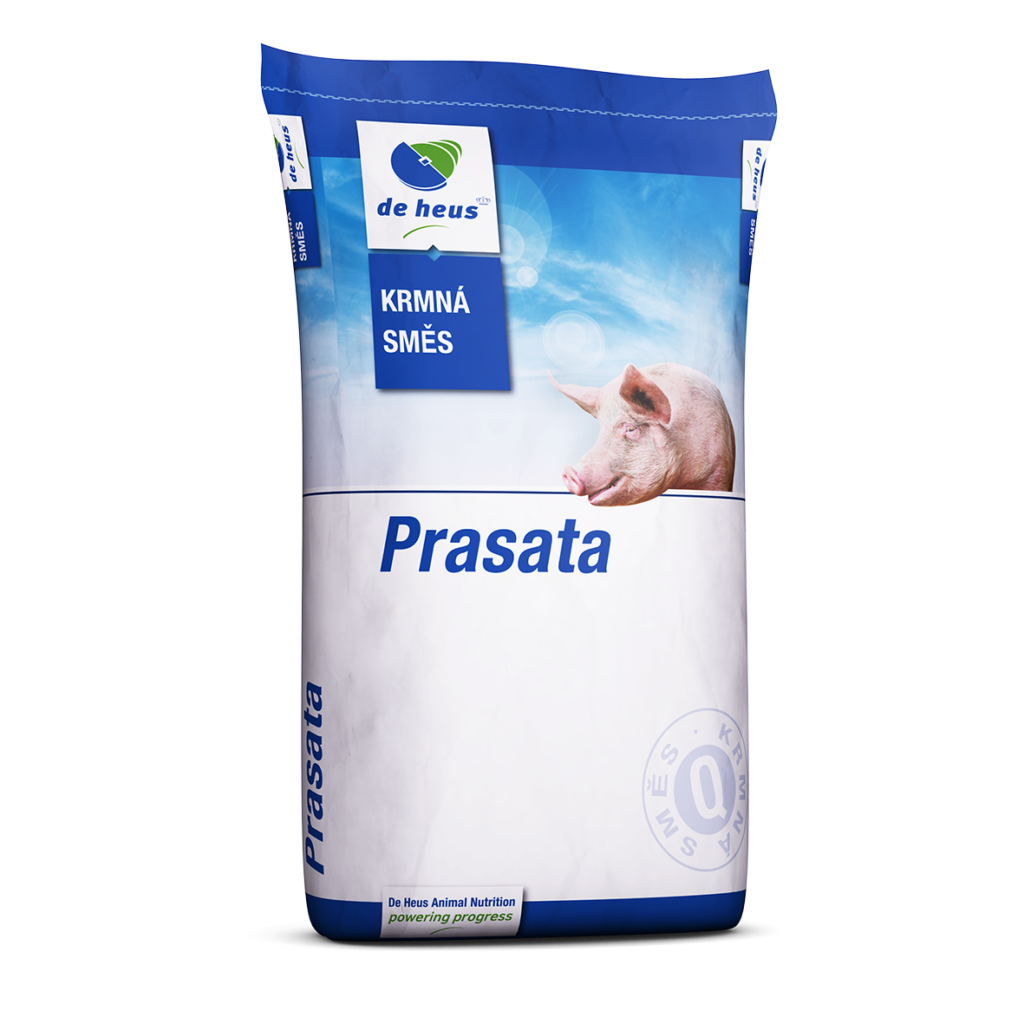
PIG UNI 15
A mashed concentrate for fattening pigs, which is mixed with cereals depending on the fattening phase in a ratio of 11 – 16 %. It is a garauntee of high growth.

A3 MAXI
A complete feed mix for fattening pigs over 60 kg. Its make up supports fast growth allied with low consumption of feed during the final phase of fattening.

A2 MIDI
A high quality granule for the feeding of pigs from 35 to 60 kg. A balance of the nutrients needed is the basis for an excellent state of health, fast growth and high meat content.

A1 MINI
Granulated feed mix for the first phase of fattening pigs, that is from a live weight of 15 to 35 kg. The nutrients it contains support an excellent state of health, fast growth and high meat content in your pigs.
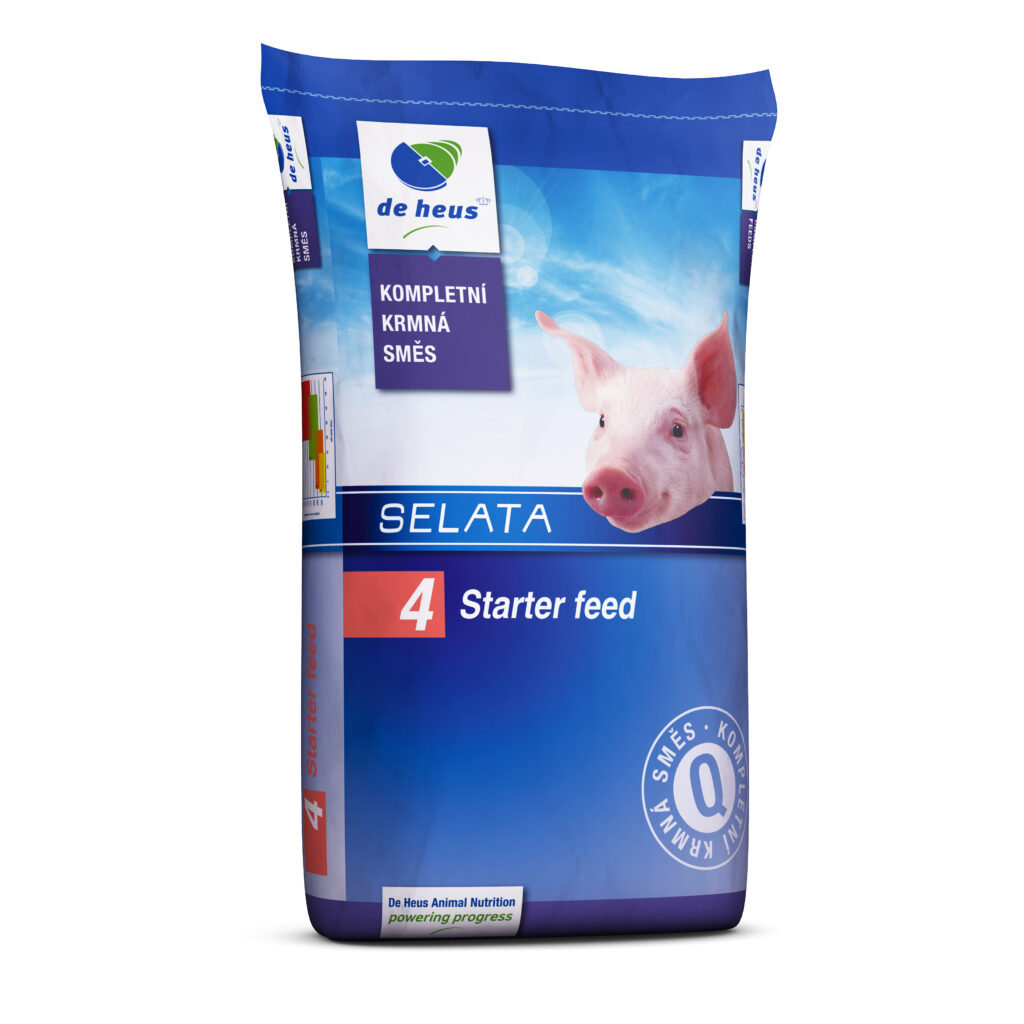
A1 START
A professional feed intended for weaned piglets with a live weight of 12 kg of up to 12 weeks of age. It provides an ideal start to piglet growth. This feed is followed by fattening mix A1 Mini or the Pig Uni 15 concentrate.
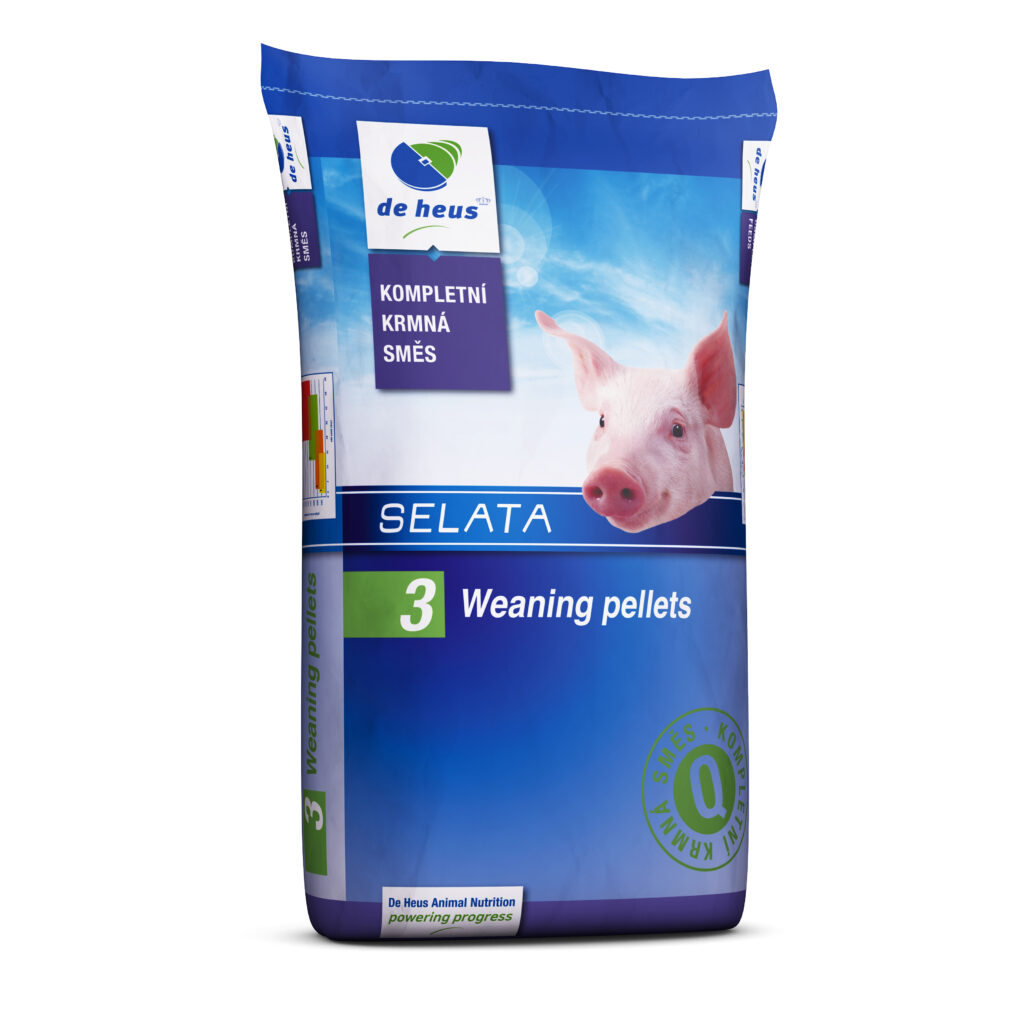
WEANING PELLETS
A prestarter for piglets from 10 days of age to 14 days after weaning from the sow. Its structure of 2 mm granules ensures problem free intake and overcoming the weaning period. Among other things it contains whey and fish flour which ensures fast growth in piglets.
